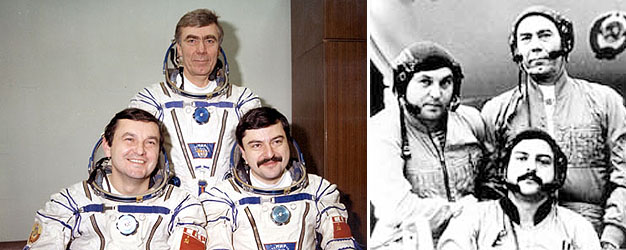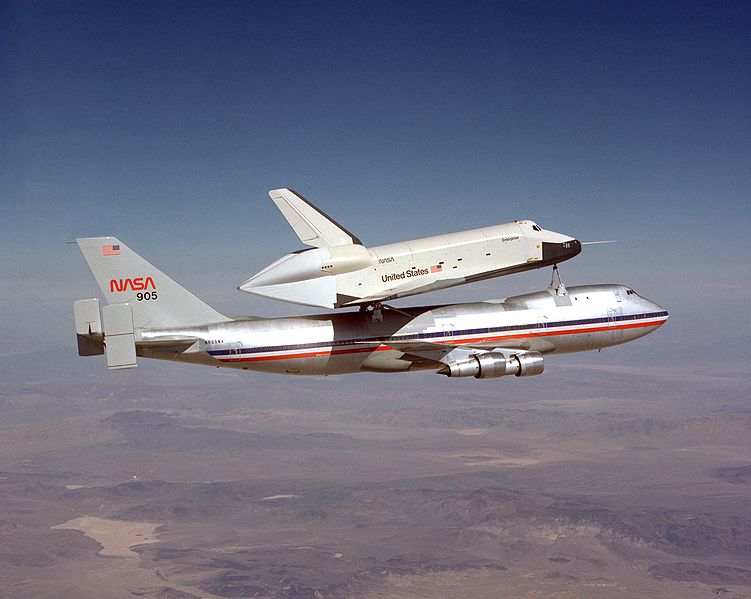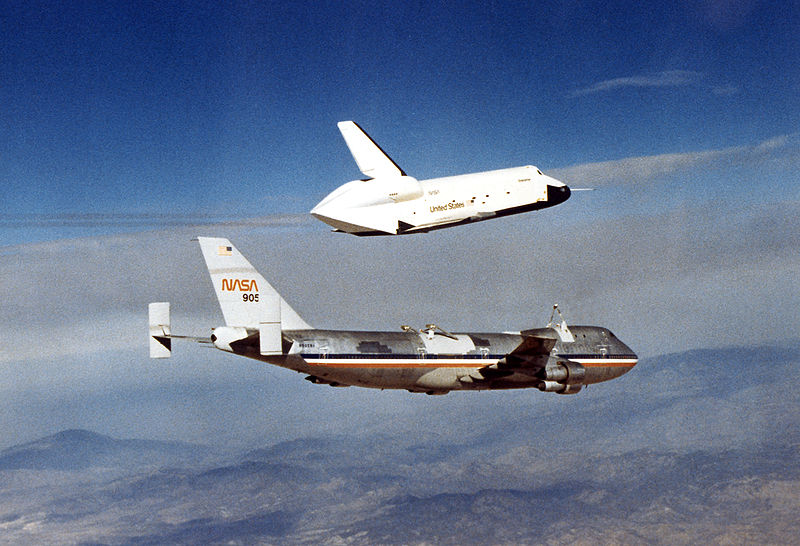Check out this amazing video created by NASA, showing a scientifically accurate reenactment of how one of the iconic images in human history was captured by the crew of Apollo 8 forty-five years ago to the day: Earthrise


Check out this amazing video created by NASA, showing a scientifically accurate reenactment of how one of the iconic images in human history was captured by the crew of Apollo 8 forty-five years ago to the day: Earthrise

NASA‘s second manned mission launched exactly 45 years ago, in 1968. Apollo 8, its crew being made up of Commander Frank Borman, Command Module Pilot Jim Lovell and Lunar Module Pilot William Anders, was the first manned mission orbiting the Moon. A pivotal milestone in U.S. President JFK’s plans to have a man walk on the surface of the Moon before the end of the decade (which was accomplished with Apollo 11 only seven months later), it took the crew three days to travel there. They orbited it ten times (each orbit taking around two hours) and came as close as 70 miles from its surface, before setting on a course for Earth. It was also the first time manned mission using the enormous Saturn V rocket as you can see in below’s video.
Nearly two decades later, another notable event took place… On December 21, 1987, three Soviet cosmonauts started their record-long space trip on board the Mir space station. Captain Vladimir Titov, Onboard Engineer Musa Manarov and researcher Anatoly Levchenko were taken to the Mir by the Soyuz TM-4 space craft. While Levchenko returned earlier, both Titov and Manarov spent just shy of 366 days (365 days, 22 hours and 39 minutes) onboard of the Mir space station. It was only upon the couple’s return that they were informed of Levchenko’s passing away in the meantime. Titov was later awarded the Order of Lenin, and the Golden Star Order for successfully completing the mission he was in command of.


Fifteen years ago to the day, man began arguably the most challenging construction project in the history of the species: the International Space Station. Sure, you have CERN’s Large Hadron Collider which got constructed to look for several theorized particles including the Higgs particle and test theories around particle and high-energy physics. But for all that is marvelous about this enormous undertaking, that project was still on Earth – more precisely deep under the ground on Swiss and French territory – while the I.S.S. was assembled in space. Coincidently, both projects’ construction started in 1998 but the LHC took three years less to reach completion, in 2008. We covered the build of the station a while back in case you misssed it.

Following from Hubble’s story in part two, the year is 1995 and in June of that year space shuttle Atlantis lifts off. It’s mission: to dock with MIR, the Russian space station that by some is seen as the predecessor to the International Space Station. This event led to what was at the time the largest spacecraft ever in orbit, with a total mass of almost 225 tons (around half a million pounds). The following five days saw joint U.S.-Russian operations including biomedical investigations, and transfer of equipment to and from Mir. The lessons learned from this and the following 10 orbiter flights to MIR would later pave the way for the ISS, a station operated by multiple partners.
In October of 1998 John Glenn, America’s first orbiting astronaut (in 1962) made history again by going up with the shuttle Discovery. This made him not only the oldest person to fly in space by serving as a payload specialist at the age of 77, but he also became the only person ever to have flown in both the Mercury and Shuttle programmes. The nine-day mission supported a variety of research, with Glenn spending most of his time in space participating in investigations on the aging process. As the effects of spaceflight on the human body show parallels to the natural changes that take place as a person ages, Glenn’s experiments were designed to test how his body responded to the microgravity environment.
The new millenium unfortunately saw another dark year for space flight. In January of 2003, space shuttle Columbia lifted off on a 17-day science mission featuring numerous microgravity experiments. Upon reentry however, Columbia suffered from a catastrophic failure due to a breach that occured during launch. As it turned out, falling foam from the external tank struck the reinforced carbon panels on the underside of the left wing due to which the heat shielding was compromised, and hot gases encountered on re-entry penetrated the hole and tore Columbia apart. The orbiter including its seven crewmembers were lost approximately 15 minutes before Columbia was scheduled to touch down at Kennedy Space Center. The loss underlined once again the vulnerabilities of the space shuttle. Again the fleet got grounded, and this time it led to President George W Bush announcing in January of 2004 that “In 2010, the space shuttle, after nearly 30 years of duty, will be retired from service.”
Stay tuned for the history of the programme’s retirement. Until next time!

The ill-fated Challenger, the second space shuttle to be built was the first to conduct a spacewalk. Unfortunately 3 years later in January of 1986, disaster struck when a seal on a rocket booster failed, leading to the shuttle’s destruction 72 seconds into its mission. It was a disaster on many levels for NASA, because not only did it lose seven astronauts and a very expensive shuttle that day but the event showed the world that this was a dangerous business to be in. On this particular launch, media attention was at an all time high, because of the presence of crew member Christa McAulliffe, who was to be the first teacher in space.

The tragedy led to a 32-months hiatus in the shuttle program, and President Ronald Reagan setting up the Rogers Commission, which was to investigate the accident. Not only that, but the Air Force decided to launch its classified military satellites using the Titan IV rockets instead.
The program bounced back however, and saw several highlights in a row in between the launch of a range of science probes and telescopes… in May of 1989, Magellan was the first planetary mission to be launched by an orbiter, despatched to Venus to make a radar map of its surface. Even more important as it would turn out was the launch of the Hubble space telescope (HST) in April of 1990 – the two would have an ongoing affair for quite some time as it turned out because the HST would need quite some maintenance.
However, looking at the results of what Hubble gave us, no one could argue with its importance in NASA’s history. The most important of those re-visits was made by Endeavour, the shuttle which was built to replace Challenger using structural spare parts originally intended for the other orbiters. In December 1993, the shuttle carried up the equipment that would correct Hubble’s flawed vision. The telescope became one of the best showcases for the shuttle as it transformed our knowledge of the cosmos by showing us the most dazzling places in the universe like we had never seen them before.
Stay tuned for part 3 where we take it away starting from the Mir missions!

Nearly 2 years ago, NASA retired its fleet of space shuttles, which started operating 30 years before. Several companies have thrown their hat in the ring to be its successor in different ways, so let us have a look back at the program that gave us the Magellan spacecraft, the Hubble telescope, and the International Space Station to name a few.
It was in the late sixties that the Space Transportation System program was devised, as a means of reducing the cost of spaceflight by introducing a reusable spacecraft. The final agreed design would feature three main components: the orbiter (the reusable spaceplane most people refer to as the shuttle), a disposable external tank and two reusable solid-fuel rocket boosters. The contract to build this triumph of human engineering would end up going to North American Aviation (later becoming part of Rockwell International, which now is a part of Boeing). When the prototype shuttle Enterprise (named after the Star Trek ship of the same name flown by Captain James T. Kirk) was ready it started a series of tests, the first of which were ground-based and then from 1977 included multiple flights to analyze the behaviour and characteristics of the orbiter.

It was humanity’s first reusable spacecraft, pushing the boundaries of technology while requiring the tremendous effort of a vast workforce that showed an unwavering commitment to mission success. Looking back on it now, the shuttles carried people into orbit repeatedly, launched, recovered and repaired satellites, conducted cutting-edge research and built the largest structure in space, the International Space Station. It would be hard to imagine a NASA history without them.

When the first space shuttle Columbia launched in April of 1981 flown by astronauts John Young and Bob Crippen, these two men truly boldly went where no man had gone before as they took off in a craft that had not first been sent on an unmanned test mission.
When Challenger, the second shuttle became operational in April of 1983, NASA now had a fleet of reusable spaceplanes. They would indeed change the way we humans would live and work in space. Large payloads could now be taken into or retreived from orbit, which opened a world of new possibilities. As the years advanced, three more shuttles joined the program: Discovery, Atlantis and Endeavour but more on that next time, so be sure to check in again soon!

When talking about rockets, shuttles, satellites, space telescopes, etc. one would undoubtly stumble upon NASA somewhere in that conversation, and truly, books could be (and have been) written about NASA but let us start at the beginning. They have been so prominent in the 2nd half of the 20th century, that it would be hard to imagine a world without them. The organisation’s Twitter account describes is beautifully:
“NASA’s mission is the pioneer the future in space exploration, scientific discovery and aeronautics research.”
This year, 2013, NASA will be celebrating their 55th anniversary which is pretty incredible. NASA actually started out as the National Advisory Committee for Astronautics, NACA (founded in 1916 to be the civilian government organization performing research into aviation) before turning into the National Aeronautics and Space Agency or NASA we know today. Who can remember a PC from back in those days? No one – that’s right, cause PCs weren’t for the mass market yet for over another decade! The pioneers of those days truly were on the cutting edge of what was technologically possible at the time, and it’s hard to imagine that your smartphone now will have multiple times more processing power than the entire Apollo 11 program put together.
Founded under President Eisenhower, it was President Kennedy who made the speech that would go into history as the “moon speech” – you can watch the highlights here. But let us not forget that one of the main reasons for NASA‘s existence was the arms race between the United States and Russia. For it was during Russia’s Sputnik I and II missions – which caught the world’s attention and the American public off-guard – in November 1957, that Eisenhower appointed the president of MIT as his special advisor on science and technology. It was feared that the successful launch of these satellites meant that intercontinental ballistic missiles would not be too far off. Less than a year later, NASA was born, and so the space race between the US and the U.S.S.R. started.
For more on NASA, stay tuned!